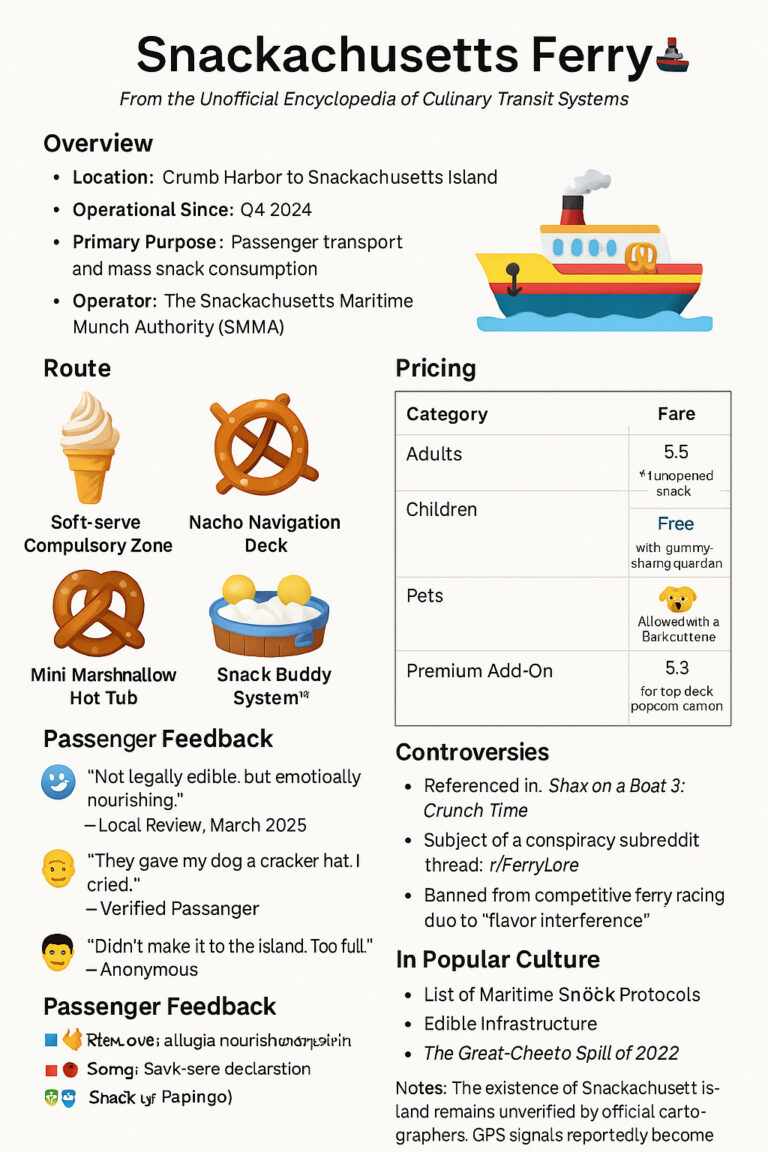Unlock Earnings: A Guide to Video Pay-Per-View Monetization
Navigating the maze of monetization in the video content market can be as thrilling as it is complex, especially when it comes to pay-per-view (PPV) models.
Creators and broadcasters are constantly seeking new ways to transform their content into revenue streams without diluting the viewer’s experience.
With PPV, they unlock the ability to charge viewers for exclusive access to live events, special content, or premium series, thereby directly influencing their income potential.
This model not only caters to consumer demand for high-quality, on-demand content but also empowers creators to craft fair pricing strategies that reflect the value of their work.
In this article, we’ll delve into how PPV works, the intricacies of pricing, and choosing the right video hosting solutions to maximize your profit.
Key Takeaways
- Pay-Per-View Monetization Offers Potential for High Immediate Revenue by Charging Viewers for One-Time Access to Events or Content
- Strategic Pricing of PPV Content Is Crucial to Balance Profit With Audience Willingness to Pay and Ensuring Value Is Reflected
- A Robust Content Delivery Network Enhances User Experience and Can Contribute Significantly to the Success of Pay-Per-View Offerings
- Subscription Video on Demand and Advertising-Based Video on Demand Provide Alternative Monetization Models With Recurring Revenue and Ad-Based Income
- Selecting a Video Hosting Platform With Necessary Features Such as Payment Processing and Scalability Is Essential for Successful PPV Execution
What Is Video Monetization?
social media video creator
In the realm of digital content, video monetization emerges as an essential strategy for creators and businesses seeking to harness the potential of their visual media.
It is a multifaceted concept, in essence revolving around the generation of revenue from video content through various distribution methods.
Pay-Per-View, often abbreviated as TVOD (Transactional Video On Demand), allows viewers to purchase access to a specific event or piece of content, such as a boxing match or concert, for a direct fee.
Subscriptions, or SVOD (Subscription Video On Demand), invite users to enjoy a library of content for a recurring price.
Meanwhile, AVOD (Advertising-Based Video On Demand) relies on embedded advertisements to generate income, giving consumers free or subsidized access to content.
Each avenue presents distinct advantages and models for revenue, whether it’s from the pulse-quickening excitement of live sports streaming or the steady income from a serialized television show.
Pay-Per-View (TVOD)
Pay-Per-View (TVOD), a linchpin in the video monetization landscape, revolves around offering audiences the option to pay a set fee for one-time access to a coveted event or film: think marquee boxing bouts or an anticipated concert extravaganza.
| Content Type | Access Model | Fee Structure |
|---|---|---|
| Sporting Events | Single Viewing | Fixed Price |
| Concerts | Limited Time Access | Pay-Per-Event |
| Exclusive Releases | One-Off Streaming | Variable Pricing |
Subscriptions (SVOD)
Subscriptions, characterized by the acronym SVOD (Subscription Video On Demand), offer a sustainable avenue for consistent revenue streams, shaped around the allure of unlimited access to a diverse media library for a regular fee: Viewers relish the wealth of content at their fingertips, from sweeping epic series to insightful documentaries, all under one digital roof.
- Entertainment buffs can indulge in binge-watching sprees of their favorite shows, appreciating the uninterrupted experience SVOD brings to the television landscape.
- Education platforms utilize SVOD for continuous learning, granting scholars the flexibility to learn at their own pace and convenience.
- Avid sports fans gain round-the-clock access to historic games, interviews, and analysis, turning any living room into a virtual sports arena.
Advertisements (AVOD)
Advertisements, operating under the model of AVOD (Advertising-Based Video On Demand), offer a unique form of monetization by embedding ads into video content. This model empowers creators and companies to provide free or cost-effective viewing experiences while still generating revenue through ad placements.
| Ad Type | User Experience | Revenue Potential |
|---|---|---|
| Pre-Roll | Ads before the video | High engagement, depending on content relevance |
| Mid-Roll | Ads during the video | Potentially high if viewers are committed to content |
| Post-Roll | Ads after the video | Lower, but can maintain viewer interest for next content |
| Banner | Ads on the video perimeter | Consistent exposure with minimal content interruption |
Now that we’ve ventured into the myriad possibilities of video monetization, let’s narrow our focus to a revenue model that’s capturing attention across diverse markets. Step into the world of Pay-Per-View streaming, and discover how this dynamic approach unfolds in the digital arena.
Pay-Per-View Video Streaming: How Does PPV Work?

Pay-Per-View video streaming, a dynamic facet of video monetization, encompasses the provision of exclusive, high-demand content to audiences on a per-payment basis. At its core, it positions premium events or content behind a digital paywall, ensuring that only paying viewers gain access. This revenue model flourishes in environments where the content holds significant value, such as major sporting events or live concerts.
Understanding the mechanics behind PPV is straightforward: creators or broadcasters set a specific price for the access to their event or content, and consumers complete a transaction to unlock this one-time viewing opportunity. Monetization success hinges on the perceived value of the content and the audience’s willingness to pay the asking price.
The process of setting up a Pay-Per-View event requires thoughtful strategy and execution:
- Selecting a robust video hosting platform equipped with necessary features like payment gateways and encrypted streaming.
- Determining a pricing model that balances profit potential with audience affordability.
- Marketing the event effectively to reach the target audience, leveraging the power of social media, email marketing, and influencer collaborations.
The allure of Pay-Per-View lies in its simplicity and immediate revenue potential, making it an enticing option for content creators and media companies aiming to capitalize on their most compelling offerings.
Having peeled back the layers of pay-per-view video streaming mechanics, a pivotal question arises. Let’s shift our focus to unraveling the strategies behind effectively pricing your pay-per-view content.
How to Price Pay-Per-View Video Content

Determining the optimal pricing for Pay-Per-View content is a critical step for content providers in maximizing their returns while ensuring value for their audience.
When a creator or a company offers access to singular videos, such as tutorial breakdowns, or to more buzz-worthy content like special events or concerts, a comprehensive strategy is needed to set a price that reflects the content’s uniqueness and potential demand.
Likewise, when disseminating educational material through this method, establishing a fee must take into consideration the content’s educational value and its production cost.
These considerations extend to general pricing guidelines, which must balance market expectations with revenue goals, a crucial pivot point influencing the success of the Pay-Per-View model.
Access to a Singular Video
Setting the right price for accessing a single video hinges largely on two dimensions: content exclusivity and production quality. Content creators face the intricate task of gauging the value their video brings: educational rigor in a tutorial demands premium pricing, whereas entertainment value in a short film may cater to different pricing expectations.
| Content Type | Content Value | Suggested Pricing Strategy |
|---|---|---|
| Tutorials | Educational Depth | Price commensurate with informational richness and production cost |
| Short Films | Entertainment and Artistic Merit | Consider audience reach and competitive positioning |
| Exclusive Interviews | Insider Insights | Higher rates for niche expertise or celebrity features |
Access to a Special Event
Pricing special events, such as live concerts or exclusive conferences, requires a nuanced understanding of the event’s unique draw and the competitive landscape. Event organizers must navigate the delicate balance between setting a high enough price to reflect the special nature of the experience while ensuring that the cost doesn’t deter potential viewers from participating and enjoying the event remotely.
Access to Educational Content
Pricing educational material within the Pay-Per-View model demands careful contemplation of both the intrinsic educational value and the cost of content creation. Educational publishers and institutions must weigh the benefits of their curricular offerings against the investment an end user is prepared to make, setting a price that respects the knowledge imparted and the resources invested in producing premier educational content.
General Pricing Guidelines
In formulating general pricing guidelines for Pay-Per-View content, providers must perform a vigilant analysis of content exclusivity, market demand, and audience demographics, shaping a price that resonates with the perceived value while remaining competitive. Strategic calculations should reflect an intricate understanding of production expenses and the anticipated return on investment, fostering a price point that attracts viewers and secures a profitable revenue model. A sustainable pricing strategy not only maximizes earnings but also fortifies the relationship with the audience by delivering value commensurate with the viewing experience.
Unveiling the mysteries of pay-per-view pricing sets the stage for our next quest: discerning the essence of pay-per-view video hosting. Gear up, as we embark on demystifying the platform where your content commands the spotlight and revenue awaits.
What Is Pay-Per-View Video Hosting?

Pay-Per-View video hosting is an innovative solution that supports content creators in optimizing their earnings by allowing them to charge viewers for exclusive access to live or pre-recorded videos. This model of hosting facilitates the pivotal link between the content and consumer, ensuring that creators are compensated for their high-quality productions or live events. With the right platform, access control becomes seamless, and revenue flows directly to the creators or media companies.
In the sphere of Pay-Per-View video hosting, intelligent infrastructure is indispensable, incorporating robust features such as secure payment systems, reliable content delivery networks, and dynamic scalability to accommodate variable audience sizes. Providers of this service uphold a business model that empowers creators with the capabilities to manage digital rights, handle authentication, and implement adaptive bitrate streaming, all critical for maintaining video quality and a superior user experience.
The success of a Pay-Per-View video hosting engagement hinges upon strategic monetization, clear communication of terms, and an interface that caters to the end user’s convenience and accessibility. Companies offering video hosting solutions understand that a smooth transaction, paired with exceptional customer support and airtight encryption, strengthens consumer trust and brand loyalty, ultimately contributing to the monetization potential of every video streamed.
Understanding pay-per-view video hosting lays the groundwork for a deeper discussion. Let’s pivot to the key factors that shape the success of a pay-per-view video platform.
Pay-Per-View Video Platform Considerations

As content creators and businesses explore the labyrinth of digital earnings through Pay-Per-View (PPV) models, the right platform becomes the linchpin of success.
Crucial elements such as content delivery must be impeccable, ensuring a seamless reach across the globe via a robust content delivery network.
Equally, the ability to provide high-quality mobile streaming services stands as a modern-day imperative, catering to viewers glued to their screens, be it on a smartphone or a tablet.
Tackling the topic of fees reveals the financial fabric of PPV monetization, affecting both profit margins and customer decisions.
An intuitive video content management system (CMS) emerges as a cornerstone, offering a centralized portal for meticulous management of video assets.
The variable tides of viewer demand underscore the significance of scalability in a platform, highlighting the need for technology that can withstand sudden surges in audience size without compromising performance.
Lastly, the option of a free trial can entice new customers and showcase the value of content, whereas its availability can strategically hook potential long-term subscribers.
Considering these factors holistically can unlock a treasure trove of earnings in the burgeoning landscape of PPV monetization.
1. Content Delivery
In the competitive arena of Pay-Per-View video monetization, content delivery stands as a pivotal component for success: It ensures that premium content reaches the audience with efficiency and high performance. Leveraging a robust Content Delivery Network (CDN) is crucial, as it diminishes lag and buffering issues, thereby enhancing the user experience and fortifying the reliability of the service.
- A robust CDN serves as the backbone, distributing content rapidly across servers globally.
- Optimized content delivery scales with audience size, maintaining video quality during high-demand events.
- Improved user experience, derived from efficient content delivery, translates into increased viewer satisfaction and retention.
2. Mobile Streaming
In the era of ubiquitous mobile connectivity, mobile streaming becomes a cornerstone for Pay-Per-View video platforms, as they cater to users who demand access to content anytime, anywhere. Ensuring the platform’s compatibility and optimized performance on iOS and Android devices is essential, as it guarantees that audiences can engage with content on their chosen device without technical hiccups, thereby securing a consistent stream of revenue for content creators.
3. Fees
In the intricate dance of Pay-Per-View video monetization, the fees structure plays a central role in the business model, balancing the scales between profitability and customer accessibility: A carefully calibrated fee can open the floodgates to revenue while ensuring that the price point does not become a barrier for potential viewers.
| Content Type | Price Setting | Customer Impact |
|---|---|---|
| Sports & Live Events | Dynamic based on event prestige | High willingness to pay for exclusivity |
| Film Premieres | Market competitive rates | Balanced for broad audience appeal |
| Educational Material | Value-based pricing | Accessible for learners, reflecting content quality |
4. Video CMS
A cutting-edge video content management system (CMS) is an essential tool that acts as the command center for content creators, allowing precise control and organization of their video libraries. A robust CMS not only streamlines publishing workflows but it also provides insightful analytics, empowering creators to make data-driven decisions to enhance viewer engagement and bolster their monetization efforts.
5. Scalability
In a market where audience numbers can fluctuate wildly, scalability becomes the keystone of a Pay-Per-View platform’s infrastructure, allowing it to accommodate a sudden surge of viewers without faltering. Providers must ensure that scalability is baked into their offering, enabling content creators to deliver seamless streaming experiences, irrespective of the demand peaks, thus safeguarding revenue and end-user satisfaction.
6. Free Trial Availability
The strategic integration of a free trial feature within a Pay-Per-View platform can serve as a powerful incentive, encouraging users to sample premium content without an upfront commitment. By orchestrating an initial, risk-free experience, platforms effectively extend an invitation to viewers which can lead to increased subscription conversions and sustained income from impressed and engaged users.
Equipped with the essentials of what to consider, it’s time to illuminate the leading pay-per-view video platform contenders. Prepare to navigate the exciting frontier of options that could revolutionize your video distribution game.
Top Pay-Per-View Video Platform Options

Selecting the right Pay-Per-View video platform can dramatically transform the revenue-generating capacity of content creators and business owners who strive to unlock the value of their video content.
In the diverse landscape of monetization opportunities, standout platforms like Dacast, Vimeo OTT, Kaltura, Muvi, and Uscreen have carved distinct niches, each offering unique sets of tools and services tailored to various needs.
These platforms don’t just host content; they enable creators to build communities, analyze viewer behavior, and customize the user experience, ultimately empowering them to amplify their earnings and grow their audience in the process.
1. Dacast
Dacast distinguishes itself in the Pay-Per-View video platform market with its emphasis on comprehensive streaming solutions, offering high-grade live broadcasting and on-demand video services. The platform’s infrastructure supports high-definition streaming and features advanced security measures such as encryption and password protection, ensuring that only authorized viewers can access premium content, making it a dependable choice for monetizing exclusive online events and video content.
2. Vimeo OTT
Vimeo OTT stands as a prime solution for creators eager to carve out their own corner in the PPV market, offering an elegant interface coupled with powerful tools for selling and distributing video content. With customization options for branding individual platforms and accessing in-depth analytics, Vimeo OTT equips providers with the ability to tailor their service to the unique preferences of their viewers, fostering a rich viewer experience that translates into sustained revenue growth.
3. Kaltura
Kaltura stands out for its highly customizable and integrative approach to Pay-Per-View video platforms, catering specifically to businesses and educational institutions. Its strength lies in its ability to merge seamlessly with existing workflows and technologies, facilitated by a comprehensive API and an extensive suite of collaborative tools:
- Kaltura’s powerful API suite allows for deep customization and integration with other software ecosystems, broadening the platform’s applicability and reach.
- The platform’s collaborative features are particularly suited for educational environments, where engagement and interactivity are paramount.
- With Pay-Per-View options, Kaltura provides a polished and scalable solution for content creators to monetize webinars, lectures, and cultural events efficiently.
4. Muvi
Muvi takes a turnkey approach to Pay-Per-View video monetization, catering to businesses poised for swift deployment of a white-labeled streaming service. Positioned for agility and branding customization, Muvi’s all-inclusive platform enables content owners to launch their own video streaming venture with options for multiple monetization strategies, including Pay-Per-View, without the intricacies of coding or prolonged setup times.
5. Uscreen
Uscreen emerges as a visionary in the realm of Pay-Per-View video platforms, delivering a user-friendly service that combines video hosting, monetization, and a customizable storefront in one intuitive package. It’s a platform that particularly shines for entrepreneurs and content creators looking to convert their videos into a profitable business with minimal technical complexities, offering features like marketing tools and analytics to help track success and enhance audience engagement.
Diving into the world of pay-per-view video platforms opens up a realm of possibilities. Let’s switch focus and guide you through crafting your very own pay-per-view video website.
How to Create a Pay-Per-View Video Website

Embarking on the creation of a Pay-Per-View video website demands an amalgamation of strategic planning and technological proficiency: It’s about crafting a digital portal that not only hosts exclusive content but also guarantees secure, profitable transactions. One begins by selecting a domain name that reflects the brand identity and is easy for potential viewers to recall. This serves as the first point of contact in the digital space and lays the groundwork for building a reliable and trusted platform.
| Development Stage | Key Elements | Outcome |
|---|---|---|
| Domain Selection | Brand identity, memorability | Recognizable digital presence |
| Website Design | User experience, interface aesthetics | Engaging and navigable site |
| Monetization Infrastructure | Payment systems, access control | Secure revenue channels |
The design and user experience of the website are quintessential: They should mirror the aspirations of the brand while offering an intuitive interface that facilitates ease of navigation. Engaging website design, combined with flawless functionality, ensures that users can explore and purchase Pay-Per-View content with minimal friction, enhancing the likelihood of repeat transactions and long-term customer retention.
At the heart of the Pay-Per-View website lies its monetization infrastructure, characterized by a robust payment system and stringent access control mechanisms. Integrating a secure payment gateway and implementing digital rights management ensures that content is only accessible to paying customers, thereby safeguarding the revenue stream and upholding the value of the exclusive content on offer.
Conclusion
In the digital media landscape, the strategic implementation of Pay-Per-View video monetization stands as a critical factor in unlocking potential earnings for content creators and businesses.
By carefully selecting a video hosting platform with robust infrastructures such as secure payment systems and high-quality content delivery networks, providers can optimize their revenue streams.
A well-considered pricing strategy that reflects the uniqueness and demand of the content ensures value for viewers and maximizes profitability.
Ultimately, Pay-Per-View monetization empowers creators to transform their video content into a lucrative asset while delivering an engaging viewer experience.






